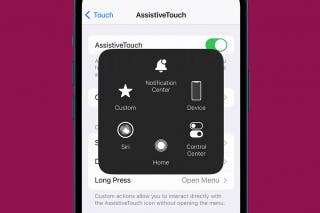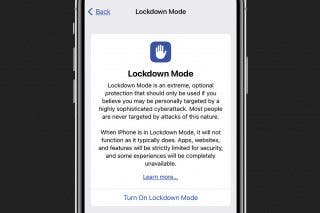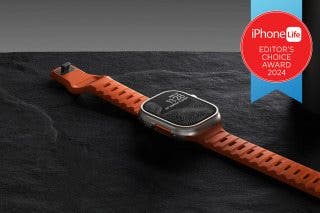Why Was the First iPhone So Successful?
A dive into iPhone history and the key to the breakout popularity of Apple's first smartphone.


Have you ever held your iPhone 12 Pro Max in your hands and wondered, like David Byrne, “How did we get here?” It may seem like we’ve always had our smartphones in our lives, but in reality, it was just 14 short years ago when the first iPhone came out. Imagine, the year 2007: no one owned an iPhone and the term “selfie” wasn’t even a twinkle in a future Instagrammer’s eye. Let’s take a walk down memory lane and learn what made the first iPhone the household name it is today.
The Smartphone Landscape Pre-iPhone
The iPhone was not the first smartphone: that honor goes to IBM’s Simon Personal Communicator, which was released all the way back in 1994. This early smartphone included a touchscreen and could send and receive faxes and emails (primarily entreaties for help from a Nigerian prince).
In the 2000s, prior to the iPhone’s debut, the smartphone landscape was dominated by devices like the BlackBerry and Motorola RAZR, which featured external keyboards and smaller screens. Other competitors like the Nokia N95 and HTC Touch matched or even surpassed the original iPhone in some areas but failed to capture the zeitgeist in the way Apple’s phone did.
You might be surprised to know that the iPhone was not Apple’s first foray into cellphone technology. That dubious honor goes to the ROKR E1, a 2005 collaboration with Motorola that dissatisfied consumers and then-Apple CEO Steve Jobs alike.
Related: The Evolution of the iPhone: Every Model from 2007–2020
The First iPhone Launch
In 2003, Apple began work on Project Purple, the internal initiative that would eventually produce the first iPhone. That’s right, Apple began ideation before their disastrous collaboration with Motorola, though the failure of the ROKR E1 may have been what convinced Apple to produce their own phone in order to get the product they wanted.
Four years later on January 9, 2007, Steve Jobs unveiled the first iPhone in his Macworld keynote address. For the public release on June 29, 2007, eager customers lined up around Apple stores for a chance to snag one of the highly anticipated devices.
Not everyone was queuing up to give Apple accolades. TechCrunch predicted, just weeks before its debut, that the iPhone was doomed to fail. Then-CEO of Microsoft, Steve Ballmer, laughed at at the iPhone’s exorbitant price point and lack of a physical keyboard (don’t worry, we’ll talk about that later), saying it wouldn’t appeal to businesspeople (who were the key smartphone demographic at the time).
Ballmer likely wasn’t laughing quite so heartily as sales numbers and reviews began to come in. By and large, people liked the touchscreen user interface, sleek design, and the way it successfully combined an iPod and a phone. Other reviewers praised the first iPhone for its ease of use. What people didn’t like was that in order to get a working iPhone, users were locked into a two-year contract with AT&T and forced to use the 2G EDGE network, which was notoriously slow and spotty. Neither were they big fans of the price tag or the way the screen collected fingerprints like Easter eggs.
None of that stopped Apple from moving 1.39 million units in the latter half of 2007. The new phone that everyone was clamoring for seems meager by today’s standards: customers could choose between an 8-gigabyte model for $599 or a 4 GB model for $499. I couldn’t even fit half the videos of my dog on that! But that would not have been a concern, since you could not record video on the first iPhone. Maybe it was for the best: the original iPhone only had a 2-megapixel camera (compare that with the iPhone 12’s 12-megapixel primary camera).

Today, it’s easy to forget the internal landscape at Apple that the first iPhone was born into. Back then, Apple’s hottest product was undoubtedly the iPod. Launched in October 2001, it was built around iTunes, which had debuted in January of that year. If you were around back then, you probably remember iPod commercials: black silhouettes dancing on bright backgrounds, stark white iPods clutched in their hands, white earbud wires twirling with them. The iPod made Apple stylish, and in another world, we may have gotten an iPhone designed much like the iPod, complete with its signature scroll wheel. That was the first design pursued by Apple’s Project Purple; it was rejected and later lambasted by Jobs in his Macworld address unveiling the iPhone.
Though the iPod look wouldn’t make it onto the first iPhone, one thing the devices had in common was reliance on iTunes. Today, your iPhone can go through its whole lifecycle without once being plugged into a computer, if you so desire. But back in 2007, if you wanted any of the music, movies, and TV shows you had stored in iTunes on your iPhone, you’d need to plug in and sync up.
But make no mistake, for 2007, the first iPhone was the real deal, offering many new technologies not before seen on the smartphone market.
What Was Special About the First iPhone?
The first iPhone was indeed groundbreaking in many ways. Unlike earlier smartphones, it included a bevy of new features, including a multitouch interface, a soft keyboard, and visual voicemail. It also offered a feature we’ve all come to know and love (while being occasionally frustrated by): the accelerometer, which is what allows you to switch back and forth between landscape and portrait mode on your phone. To learn more about special iPhone features like the accelerometer, consider signing up for our free Tip of the Day newsletter.
The first iPhone’s soft keyboard was perhaps its most revolutionary feature at the time. Other popular smartphones of the mid-2000s, like the BlackBerry, were dominated by keyboards with physical buttons that people would use to type and navigate their screens. Physical keyboards took up nearly half of the phone, forcing designers to squeeze the user interface into small, crowded screens.
Apple wanted nothing to do with the limitations inherent in a physical keyboard. Though there is some disagreement on who first had the idea to build a touchscreen phone, Apple diverted resources from its prototype touchscreen tablet dubbed Model 035 to begin work on a touchscreen mobile phone. The engineers quickly ran into a problem, though: the buttons on the soft keyboard were so small that accuracy was a big challenge. Former Apple executive Scott Forstall stopped work on other aspects of the phone and tasked all his user interface developers with developing a better soft keyboard. Eventually, an unnamed engineer landed on technology that used artificial intelligence to predict what letter users would type next.
With this technology, Apple had developed an accurate keyboard built right into a touchscreen smartphone. Because they didn’t need to build a hard keyboard, they were able to make the screen bigger. As Growth Marketer and Freelance Tech Writer Nelson Jordan puts it, “Removing the physical keyboards [...] opened the door to much bigger screens, which in turn changed how we used our phones. They weren't just for talk, text, and email anymore. They were for games, videos, and entertainment. Indeed, that's how we use them the vast majority of the time today.”
You might be surprised to learn that the first iPhone did not include the App Store. Though today it’s hard to imagine our iPhones without a veritable smorgasbord of apps, Steve Jobs was not wild about the idea of ceding any control over the device to third parties. It’s a good thing Apple came around on that—just imagine all the fancy brunches that would have gone undocumented on Instagram!
Other novel technologies debuted with the first iPhone were a proximity sensor that prevented unwanted screen interaction when holding your phone to your when on calls, and an ambient light sensor, which adjusted screen brightness based on your surroundings. Both features remain with the iPhone today.
From the very beginning, the iPhone differed from its competitors by using Safari for web browsing, which allowed the first iPhone to display web pages closer to how they would appear on a desktop.
All these features: the touchscreen, the soft keyboard, the accelerometer, mobile Safari, and more were designed with ease of use in mind. Though the first iPhone eschewed features other smartphones of the time offered, like 3G and MMS, its focus on user experience put it head and shoulders above its competitors. Undoubtedly, this focus on user experience paid off.
Since its launch in 2007, the iPhone has gone through an incredible twenty iterations. Some have been more popular than others, but the iPhone line has been wildly successful by any measure. Indeed, it’s hard to think of smartphones at all without thinking of the iPhone. Though one can hardly call the iPhone’s beginnings humble, the strides taken in just 14 years are nothing to sneeze at. So, next time you take a panoramic video with your 12-megapixel camera, edit it with a third-party app from the App Store, and send it out to all your friends over your 5G connection, spare a thought for a time in which it was a cool party trick just to pull out your first-generation iPhone and turn it sideways to show off the accelerometer’s landscape orientation.
Top image credit: nyker / Shutterstock.com

August Garry
August Garry is an Associate Editor for iPhone Life. Formerly of Gartner and Software Advice, they have six years of experience writing about technology for everyday users, specializing in iPhones, HomePods, and Apple TV. As a former college writing instructor, they are passionate about effective, accessible communication, which is perhaps why they love helping readers master the strongest communication tools they have available: their iPhones. They have a degree in Russian Literature and Language from Reed College.
When they’re not writing for iPhone Life, they’re reading about maritime disasters, writing fiction, rock climbing, or walking their adorable dog, Moosh.
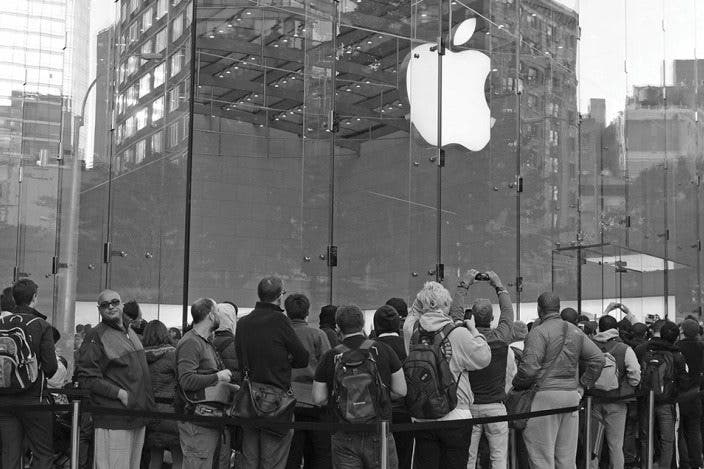
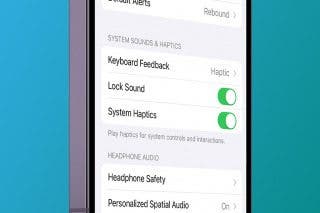
 Rhett Intriago
Rhett Intriago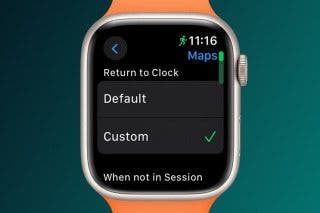
 Leanne Hays
Leanne Hays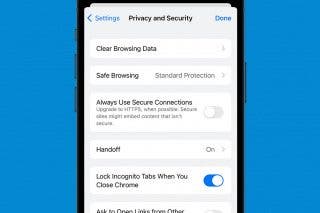
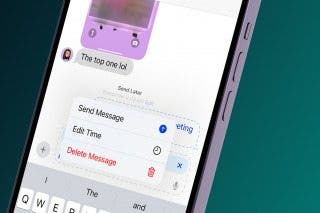
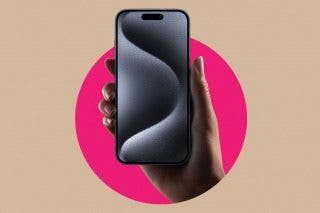

 Amy Spitzfaden Both
Amy Spitzfaden Both
 Olena Kagui
Olena Kagui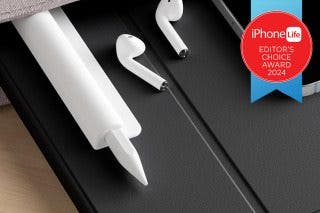
 Ashleigh Page
Ashleigh Page

 Linda Ruth
Linda Ruth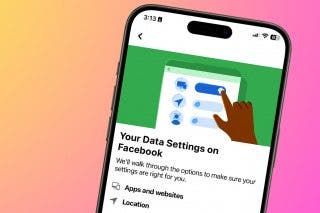
 Rachel Needell
Rachel Needell
 Cullen Thomas
Cullen Thomas